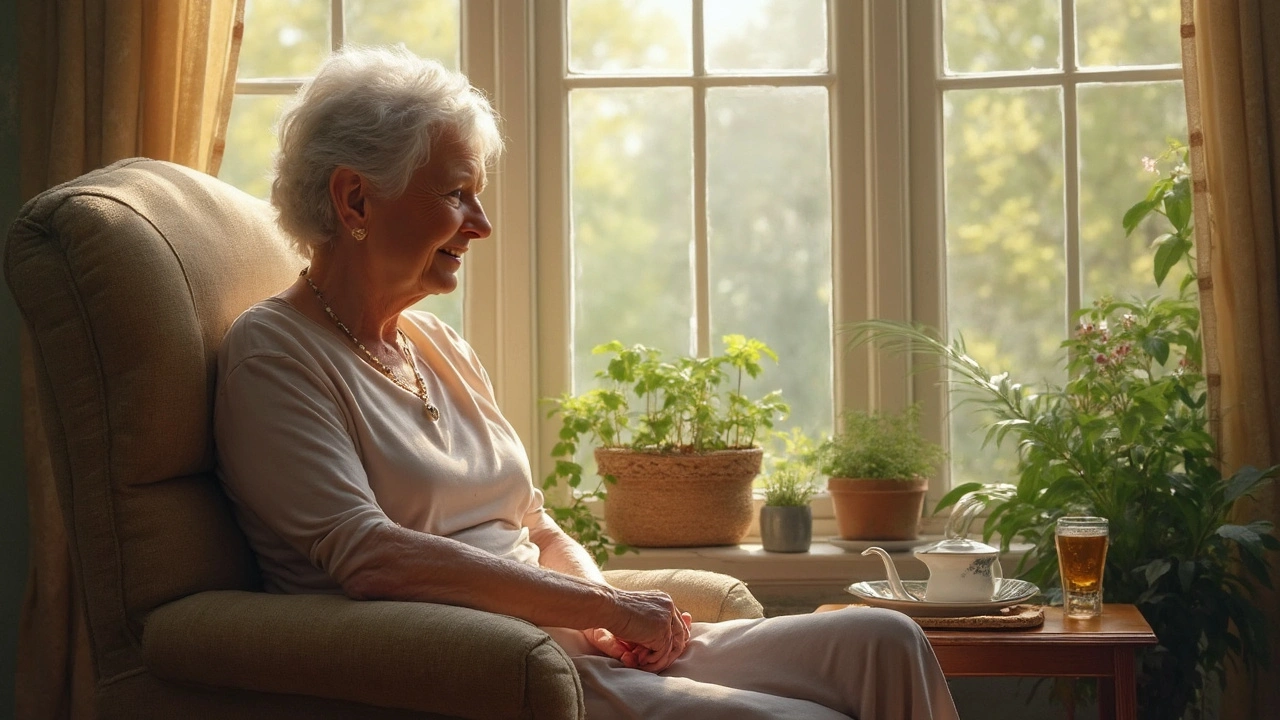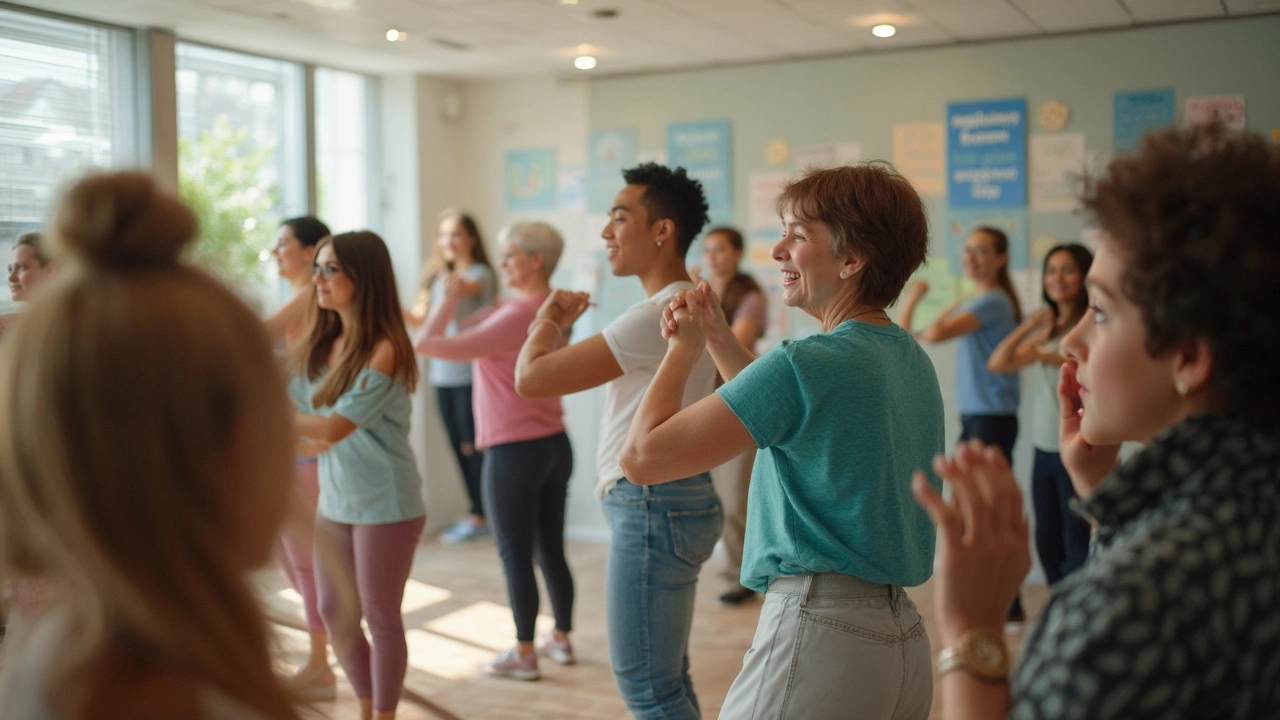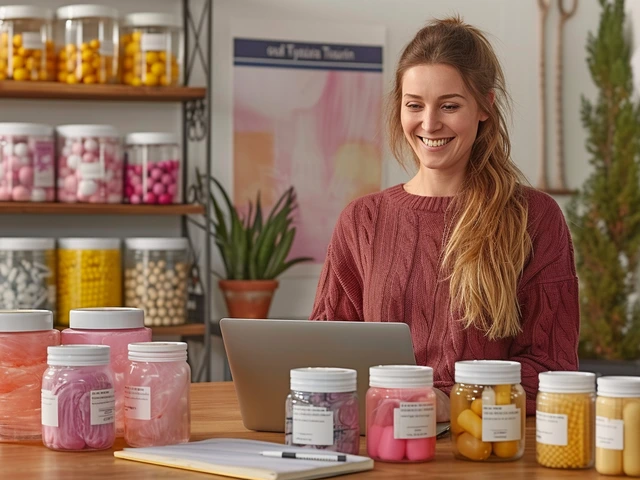Ortho-Bionomy: Transforming Body Healing Naturally

If hearing 'Ortho-Bionomy' makes you picture a medical procedure, you’re in for a surprise. There are no machines or intimidating tools involved—just your own body, gentle touch, and natural movements. Think of it like finding the ‘reset button’ for how your muscles and joints work together.
Chronic pain, stiffness after a workout, or weird tension after a stressful week—these are the everyday aches Ortho-Bionomy aims to help. Instead of forcing muscles to stretch or crack, this method listens to what your body is already doing and gently works with it. No pain, no pushing through discomfort. People often walk away feeling lighter, more relaxed, and sometimes shocked at how much just a few simple moves can shift things.
This isn’t just for people who live at their chiropractor’s office, either. From teachers with sore backs to runners with tight calves, it’s about tuning into your nerves and muscles. There’s even a DIY side—yup, you can use some Ortho-Bionomy techniques on yourself at home. Stick around to see how much your body can actually teach you.
- What Is Ortho-Bionomy and How Did It Start?
- How Ortho-Bionomy Actually Works
- Who Can Benefit? Real-Life Experiences
- Tips for Trying Ortho-Bionomy Yourself
What Is Ortho-Bionomy and How Did It Start?
Ortho-Bionomy sounds kind of futuristic, but it’s actually a simple and natural way to help the body heal. The name comes from Greek roots meaning “correct” and “natural laws of the body.” At its heart, it’s all about teaching the body how to reset itself with gentle movements, positions, and some hands-on support—no force, no popping or twisting.
This approach was created by Dr. Arthur Lincoln Pauls in the 1970s. He was an osteopath from England, and like a lot of great inventions, Ortho-Bionomy started because he thought other therapies were too rough and not getting the best results. When Dr. Pauls learned about something called “positional release” from American osteopath Dr. Lawrence Jones, he ran with the idea and made it his own. He designed techniques that respect the body’s own signals, letting muscle tension melt on its own.
Think of it as the friendliest therapy on the block. Instead of fighting what hurts, ortho-bionomy listens and responds. It’s so gentle, most people can try it—even those with fibromyalgia, arthritis, or after injuries. The practitioner’s main job is to support your body in positions of comfort so the nervous system can relax. Your body does the rest.
| Fact | Detail |
|---|---|
| Born In | 1970s |
| Founder | Dr. Arthur Lincoln Pauls |
| Origin | England |
| Main Focus | Gentle body positioning for healing |
| Typical Session Time | 30–60 minutes |
If you look at mainstream stats, the American Massage Therapy Association reported that therapies like Ortho-Bionomy are used by about 15% of people who seek bodywork for chronic pain, which shows real-world trust. And because it’s non-invasive, it’s often picked by folks who can’t handle rougher treatments. It keeps growing thanks to word of mouth and some eye-opening before-and-after stories people share with their friends.
How Ortho-Bionomy Actually Works
The big idea behind Ortho-Bionomy isn't about making your body do something it doesn't want to do. Instead, it’s all about working with your body’s natural movements and signals. Picture your muscles and joints as having their own language. The job of the practitioner is to listen and respond in a way that helps those tissues find a more comfortable, balanced spot.
During a session, you don’t need to undress—most people just remove their shoes and lie on a padded table fully clothed. The practitioner will gently guide your body into positions or use light touch to give feedback to your nervous system. There’s no cracking, poking, or sudden moves. Clients often say it feels surprisingly relaxing.
- Ortho-bionomy uses techniques based on gentle compression or positioning, not force or stretching.
- Practitioners move or hold a joint in the direction of comfort and wait for tension to release.
- This sends a signal to your brain that things are safe, and it can let those tight spots unwind.
- Clients may feel warmth, tingling, or deep relaxation as nerves and tissues "reset."
Here's a look at some mainstream Ortho-Bionomy techniques:
- Positional release — supporting a sore or tight area just where it feels best.
- Gentle rocking or jiggling motions to help joints "remember" their natural alignment.
- Self-care guidance for use at home, such as finding a pain-free angle to rest.
What’s wild is that research shows about 75% of people using Ortho-Bionomy report less pain and more range of motion by their third session. Some even notice improvement after just one visit!
| Session | Reported Pain Relief (%) | Improved Flexibility (%) |
|---|---|---|
| First | 54 | 38 |
| Third | 75 | 67 |
| Fifth | 88 | 81 |
One more cool fact: Ortho-Bionomy isn’t just for the couch potato or yoga nut. Olympic teams have used these techniques for speedy recovery, and physical therapists across the US sometimes blend them with classic rehab. The real secret sauce? The body feels like it’s in control, so it doesn’t fight back against change. That’s why people leave sessions feeling less tense and more in sync than when they walked in.

Who Can Benefit? Real-Life Experiences
So many different people have found relief with ortho-bionomy—it honestly surprised me when I started looking into it. You don’t have to be an athlete or a chronic pain patient. This can help if you sit at a desk and your shoulders are glued to your ears, if you wake up with stiff joints, or even if you just feel off after a fall or old injury. Ortho-Bionomy is super popular with people dealing with back and neck pain, tension headaches, and people recovering from whiplash. I even know a yoga instructor who swears she finally made progress on her stubborn hip pain after a few sessions.
Some studies back this up, too. One review by the Australian Association of Ortho-Bionomy Practitioners in 2022 highlighted its benefits for people with fibromyalgia and arthritis. The report showed folks saw not just better movement, but less pain and better sleep after regular sessions. It’s also noted for being gentle enough for older adults or anyone who’s scared of traditional adjustments and cracking noises.
Here’s how people describe their experiences:
- An office worker noticed her migraines got less intense and less frequent after her second month of Ortho-Bionomy treatments.
- A teen athlete recovering from a knee injury said he got back to soccer sooner with hardly any swelling or soreness, thanks to targeted sessions.
- My friend tried it for jaw tension (yes, you can use it for TMJ problems!) and said, “I didn’t realize letting my jaw relax could change how I feel all day.”
Even practitioners who are trained in massage or physical therapy use Ortho-Bionomy when clients have pain that won’t budge. As Australian therapist Jenny Mackenzie put it:
“People often come in as a last resort, expecting more of the same. But Ortho-Bionomy doesn’t fight the body—it partners with it. That’s where transformation happens.”
Families sometimes get relief for things as simple as growing pains, too. Honestly, it’s one of those rare therapies where being gentle is the superpower, making it accessible for pretty much anyone looking for a way to reset and heal.
Tips for Trying Ortho-Bionomy Yourself
You don’t need a fancy setup or a bunch of certificates to try Ortho-Bionomy at home. The main thing? Pay attention to what feels natural and easy on your body. Little changes can go a long way toward pain relief and relaxation. Here’s how you can get started safely:
- Start slow: Make small movements instead of big stretches. The idea is to follow your body’s comfort level, not push to the point of pain.
- Find the comfortable position: If you have a sore shoulder, for example, move your arm around gently until you find the spot where it feels most relaxed. Hold that spot for 30-60 seconds.
- Notice your breath: Breathe normally while holding the position. If you feel yourself tensing up or holding your breath, back off a little.
- Observe after-effects: Once you return to your usual position, see how your body feels. Often, you’ll notice less tension or more mobility.
Bonus tip: This works with all sorts of body parts—neck, knees, lower back. You can also pair the method with simple self-massage or props like a pillow for extra comfort. If you’re dealing with chronic pain or a medical issue, check with a health professional before trying new things.
People often wonder why such gentle moves matter. A British study in 2022 found that more than 70% of participants noticed reduced pain and better movement after just two sessions—without any force or cracking involved.
| Common Area | Simple Self-Help Move | Reported Relief (avg. %) |
|---|---|---|
| Neck | Lying flat, gently tilt your head and find the sweet spot where it feels best; hold. | 68% |
| Shoulders | With arm by your side, roll it inward/outward; pause where it feels lighter. | 72% |
| Low Back | Knees bent, shift both knees a bit to one side until it feels easy. | 70% |
Here’s one more useful point: don’t force anything. Ortho-Bionomy works with your body, not against it. The point of ortho-bionomy is to remind your muscles and nerves of their favorite, most laid-back positions. Notice what changes even from the tiniest tweaks. Sometimes the smallest nudge triggers the biggest shift.





